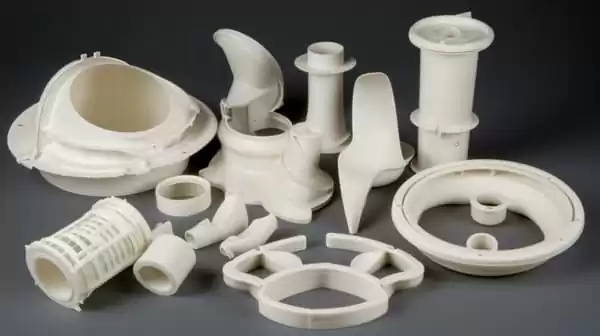Introduction:
Plastic manufacturing processes play a crucial role in shaping the modern world, enabling the production of a wide range of products we use in our daily lives. Among these processes, vacuum forming and blow molding have gained significant popularity due to their efficiency and versatility. This article aims to provide a comprehensive comparison of vacuum forming and blow molding, exploring their advantages, disadvantages, and cost-effectiveness.
Throughout this article, we will delve into the intricacies of vacuum forming and blow molding, highlighting their unique features and applications. By comparing these techniques side by side, we aim to shed light on their respective advantages and disadvantages, allowing readers to make well-informed choices regarding their manufacturing processes.
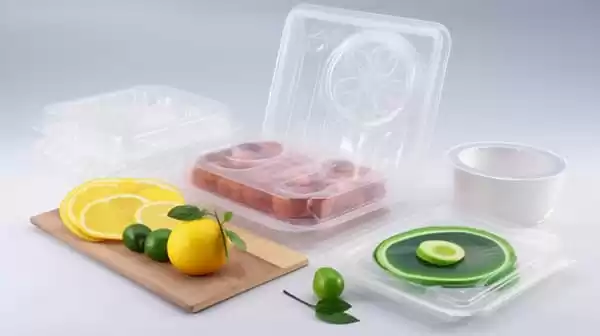
Additionally, we will evaluate the cost-effectiveness of vacuum forming and blow molding, addressing factors such as initial investments, tooling costs, and production volume. By assessing the financial aspects, we can determine the viability of each method for different scales of production and identify scenarios where one approach may offer greater cost advantages over the other.
II. Understanding Vacuum Forming process
A. Definition and Process:
Vacuum forming, also known as plastic thermoforming, is a plastic manufacturing process that involves shaping a heated sheet over a mold using vacuum pressure forming processor vacuum and air pressure. The process begins with a flat sheet of thermoplastic material, which is heated until pliable. The heated plastic sheet is then placed over a mold and secured in place. A vacuum is applied, removing the air between the mold and the plastic sheet. This vacuum pressure allows the plastic to conform to the shape of the mold, creating the desired form. Once the plastic has cooled and solidified, it is removed from the mold, resulting in a vacuum-formed product.
B. Applications and Industries:
Vacuum forming finds applications in various industries due to its versatility. Some common industries where vacuum forming is commonly used include:
- Packaging: Vacuum forming is widely employed in packaging for creating trays, blister packs, clamshells, and other types of product packaging. It offers cost-effective solutions for protecting and showcasing products.
- Automotive: Vacuum forming is utilized in the automotive industry to manufacture interior components such as dashboards, door panels, and trim pieces. Its ability to produce large, lightweight, and durable parts makes it suitable for automotive applications.
- Medical Equipment: Vacuum forming is employed to produce components for medical equipment such as trays, enclosures, and housings. It provides a clean and hygienic solution for medical device manufacturers.
- Fitness Equipment: Manufacturers of fitness equipment use vacuum forming to create parts like equipment enclosures, covers, and shells. Vacuum forming offers design flexibility to achieve aesthetically pleasing and functional components.
C. Design Flexibility and Ability to Create Simple and Complex Shapes:
One of the key advantages of vacuum forming is its design flexibility. This process allows for the creation of both simple and complex shapes, offering manufacturers a wide range of possibilities. Vacuum forming can produce parts with large surface areas, making it suitable for items such as trays and panels. Additionally, by using techniques like twin-sheet forming, multiple sheets can be fused together to create hollow structures or double-walled parts.
The ability to create complex shapes in vacuum forming is achieved by using molds with detailed features and by incorporating undercuts and draft angles into the mold design. This enables the production of intricate and customized components. Whether it's a sleek and contoured automotive interior part or a precisely molded packaging insert, vacuum forming can accommodate a variety of shapes and sizes, providing design flexibility for manufacturers.

In conclusion, vacuum forming is a plastic manufacturing process that utilizes vacuum pressure to shape heated plastic sheets over molds. It finds applications in diverse industries such as packaging, automotive, medical equipment, and fitness equipment. With its design flexibility and capability to create both simple and complex shapes, vacuum forming offers manufacturers a versatile and cost-effective solution for their plastic component needs.
III. Exploring Blow Molding
A. Definition and Process:
Blow molding is a plastic manufacturing process that involves shaping a heated thermoplastic material by using air pressure. The process begins with melting the thermoplastic material, which is then extruded as a hollow tube called a parison. The parison is clamped into a mold, and compressed air is introduced, inflating the parison to take on the shape of the mold. As the plastic cools and solidifies, the mold is opened, and the finished product is ejected.
B. Common Applications and Industries:
Blow molding is widely utilized in various industries due to its suitability for producing hollow parts and containers. Some common applications and industries where blow molding is commonly used include:
Packaging: Blow molding is extensively employed in the packaging industry for creating bottles, containers, and jugs. It offers a cost-effective solution for producing lightweight and durable packaging options for beverages, personal care products, household chemicals, and more.
Automotive: Blow molding is used in the automotive industry for manufacturing components such as fuel tanks, air ducts, reservoirs, and automotive fluid containers. Its ability to produce large, seamless, and impact-resistant parts makes it suitable for automotive applications.

Consumer Goods: Blow molding is utilized in the production of various consumer goods such as toys, storage containers, and household items. The process enables the creation of sturdy and functional products that meet consumer needs.
Industrial Applications: Blow molding is employed in industries where large containers, tanks, and industrial equipment are required. This includes applications in chemical storage, agriculture, and water treatment.
C. Suitability for Producing Hollow Parts and Containers:
One of the key advantages of blow molding is its suitability for producing hollow parts and containers. By inflating the parison using compressed air, the molten plastic takes on the shape of the mold, resulting in hollow structures. This makes blow molding an efficient and cost-effective process for creating bottles, containers, and other similar products.
Blow molding allows for the production of seamless and uniform wall thickness containers, ensuring structural integrity and optimal performance. The process enables manufacturers to create containers with various sizes, shapes, and volumes to meet specific packaging or storage requirements. The versatility and efficiency of blow molding make it a preferred choice for industries where hollow parts and containers are essential.
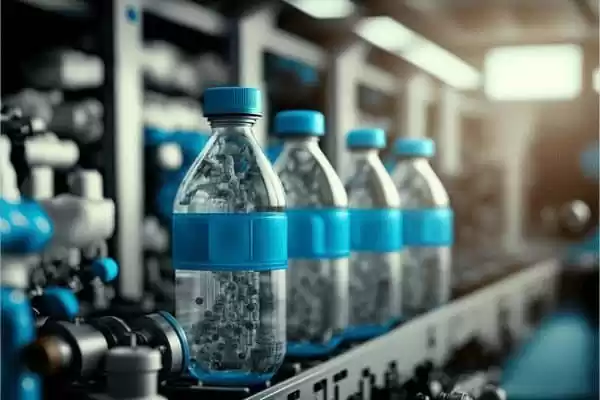
In conclusion, blow molding is a plastic manufacturing process that utilizes air pressure to shape heated thermoplastic materials into hollow parts and containers. It finds applications in industries such as packaging, automotive, consumer goods, and industrial sectors. The process's suitability for producing hollow structures and its ability to create seamless, durable, and versatile containers make blow molding an efficient and cost-effective solution for manufacturers.
IV. Differences between Vacuum Forming and Blow Molding
A. Process Comparison: Heating, Shaping, and Forming Methods:
Heating: In vacuum forming, a plastic sheet is heated until pliable and then placed over a mold where vacuum pressure or vacuum and air pressure are applied to shape the plastic. In blow molding, the thermoplastic material is melted and extruded as a hollow tube (parison), which is then inflated using compressed air to take the shape of the mold.
Shaping: Vacuum forming uses vacuum pressure or vacuum and air pressure to draw the heated plastic sheet onto the mold, conforming it to the desired shape. In blow molding, the parison is inflated using compressed air to expand and take on the form of the mold.

Forming Methods: Vacuum forming is a one-sided molding process where the plastic is shaped against the mold surface, while blow molding is a two-sided molding process where the plastic is shaped between the mold halves.
B. Design Capabilities and Limitations of Each Process:
Vacuum Forming:
Design Capabilities: Vacuum forming offers design flexibility, allowing the creation of both simple and complex shapes. It is suitable for producing large, flat surfaces, trays, and panels.
Limitations: Highly intricate designs with undercuts and complex geometries may be challenging to achieve using vacuum forming.
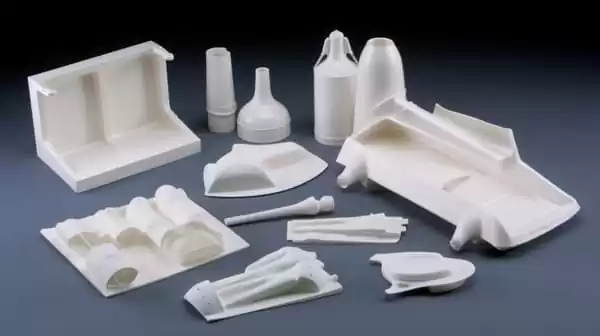
Blow Molding:
Design Capabilities: Blow molding enables the production of hollow parts and containers with uniform wall thickness, making it suitable for bottles, containers, and similar products. It can accommodate complex shapes and intricate details.
Limitations: Blow molding may have limitations in creating large, flat surfaces or parts with extensive surface details.
C. Key Differences and Suitability for Specific Applications:
Vacuum forming's design flexibility and ability to create both simple and complex shapes make it suitable for industries such as packaging, automotive, fitness equipment, and medical equipment. It is cost-effective for small-scale production or rapid prototyping.
Blow molding's capability to produce hollow parts and containers with uniform wall thickness makes it ideal for applications in packaging, automotive, consumer goods, and industrial sectors. It is efficient for high-volume production and offers durability and versatility in container design.

The key differences between vacuum forming and blow molding lie in their heating, shaping, and forming methods, as well as their design capabilities and limitations. Understanding these differences allows manufacturers to select the most suitable process based on their specific requirements, such as complexity of design, production volume, and the type of product being manufactured.
V. Advantages of Injection Molding over Vacuum Forming process
Detailed Advantages over Vacuum Forming:
- Precision and Intricate Designs: Injection molding offers exceptional precision and the ability to create intricate designs with tight tolerances. The high-pressure injection ensures that the molten plastic fills every detail of the mold cavity, resulting in precise and consistent parts. This level of precision makes injection molding suitable for applications where intricate and complex designs are required, such as in electronics, medical devices, and automotive components.
- High-Volume Production Capabilities: Injection molding excels in high-volume production due to its automated and efficient process. Once the mold is set up, the cycle time for each part is relatively fast, allowing for mass production. This scalability makes injection molding ideal for industries that require large quantities of plastic components, ensuring cost-effectiveness and timely delivery.
- Material Options and Durability: Injection molding supports a wide range of thermoplastic materials, providing manufacturers with a broad selection of material options. This versatility allows for the use of engineering-grade plastics that offer enhanced strength, durability, and resistance to various environmental factors. The ability to select the right material for specific applications ensures that the final products meet the required standards of strength, performance, and longevity.
- Streamlined Production Workflow: Injection molding offers a streamlined production workflow, reducing the need for extensive post-processing. The mold design incorporates features such as ejector pins and slide actions, which aid in the easy removal of the molded part from the mold. Additionally, features like gating and runner systems facilitate efficient material flow and minimize material waste. The automated nature of injection molding also reduces labor requirements and enhances overall production efficiency.
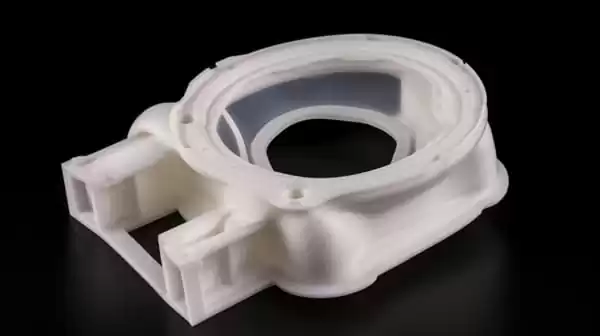
VI. Advantages and Disadvantages of Vacuum Forming
A. Advantages of Vacuum Forming:
- Cost-effectiveness and Low Initial Investments: Vacuum forming is known for its cost-effectiveness, particularly in comparison to other plastic molding processes like injection molding. The tooling costs for vacuum forming are generally lower, making it an attractive option for small-scale production or rapid prototyping. The lower initial investments required for equipment and tooling make vacuum forming a cost-efficient choice, especially for manufacturers with budget constraints.
- Design Flexibility and Versatility: One of the significant advantages of vacuum forming is its design flexibility. It offers versatility in creating both simple and complex shapes, making it suitable for a wide range of products and applications. Vacuum forming can accommodate various sizes and configurations, allowing for customization and adaptation to specific design requirements. Manufacturers have the freedom to produce prototypes and iterate designs quickly, thanks to the ease of mold creation and the relatively simple setup process.

B. Disadvantages of Vacuum Forming:
- Limited Suitability for Complex Shapes: While vacuum forming offers design flexibility, it does have limitations when it comes to producing highly complex shapes. Parts with intricate geometries, undercuts, or multiple deep draws may pose challenges in achieving the desired results. The vacuum forming process is better suited for relatively simple shapes with larger surface areas. For applications requiring intricate details or precise tolerances, other molding processes like injection molding may be more suitable.
- Material Limitations and Temperature Requirements: Vacuum forming may have limitations in terms of the materials it can effectively process. The thermoplastic materials used in vacuum forming must be able to reach a certain temperature for proper shaping and forming. Some materials may not withstand the high temperatures required, limiting the range of options for manufacturers. Additionally, certain materials may have limited availability in the form of suitable sheets for vacuum forming.
Conclusion:
In conclusion, this article has provided a comprehensive analysis of vacuum forming and blow molding, two popular plastic manufacturing processes. We have explored their definitions, processes, applications, design capabilities, and limitations. By understanding the differences and advantages of these techniques, manufacturers can make informed decisions when selecting the most suitable method for their specific needs.
Choosing the right manufacturing method can lead to enhanced efficiency, cost savings, and the ability to meet the unique demands of various industries. Whether it's vacuum forming for its design flexibility or blow molding for its capability to create hollow parts, manufacturers can optimize their production processes by selecting the appropriate technique.
In conclusion, it is vital for plastic manufacturers to fully comprehend the differences and advantages of vacuum forming and blow molding. By doing so, they can make informed decisions that align with their specific needs, resulting in high-quality, cost-effective, and precisely molded plastic components.

